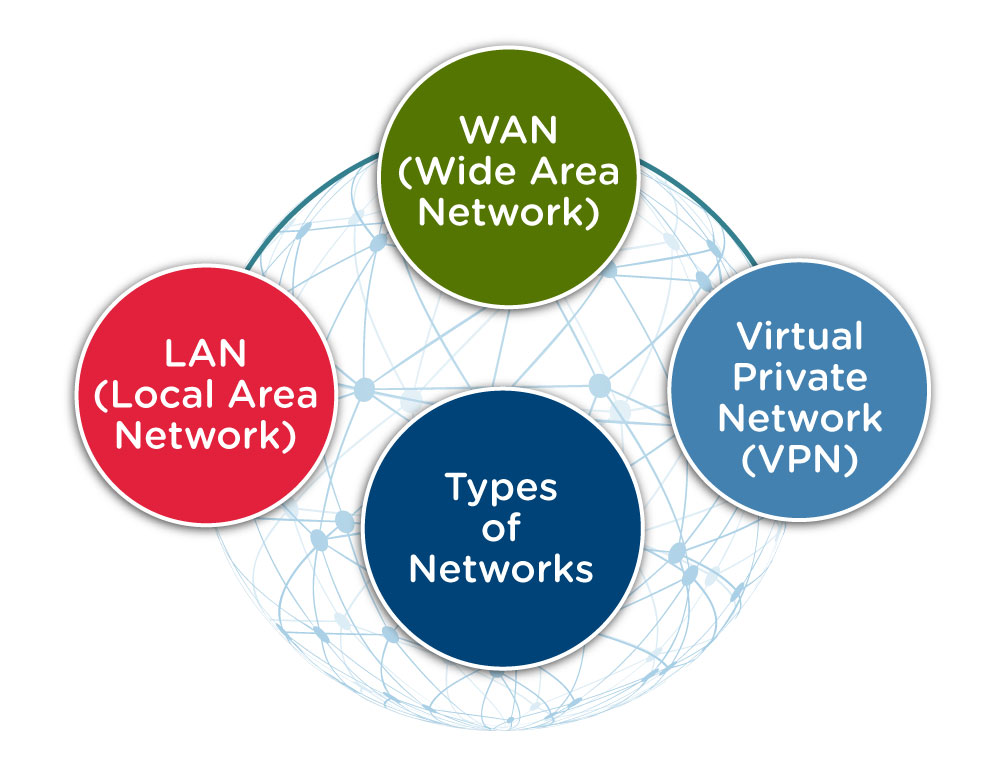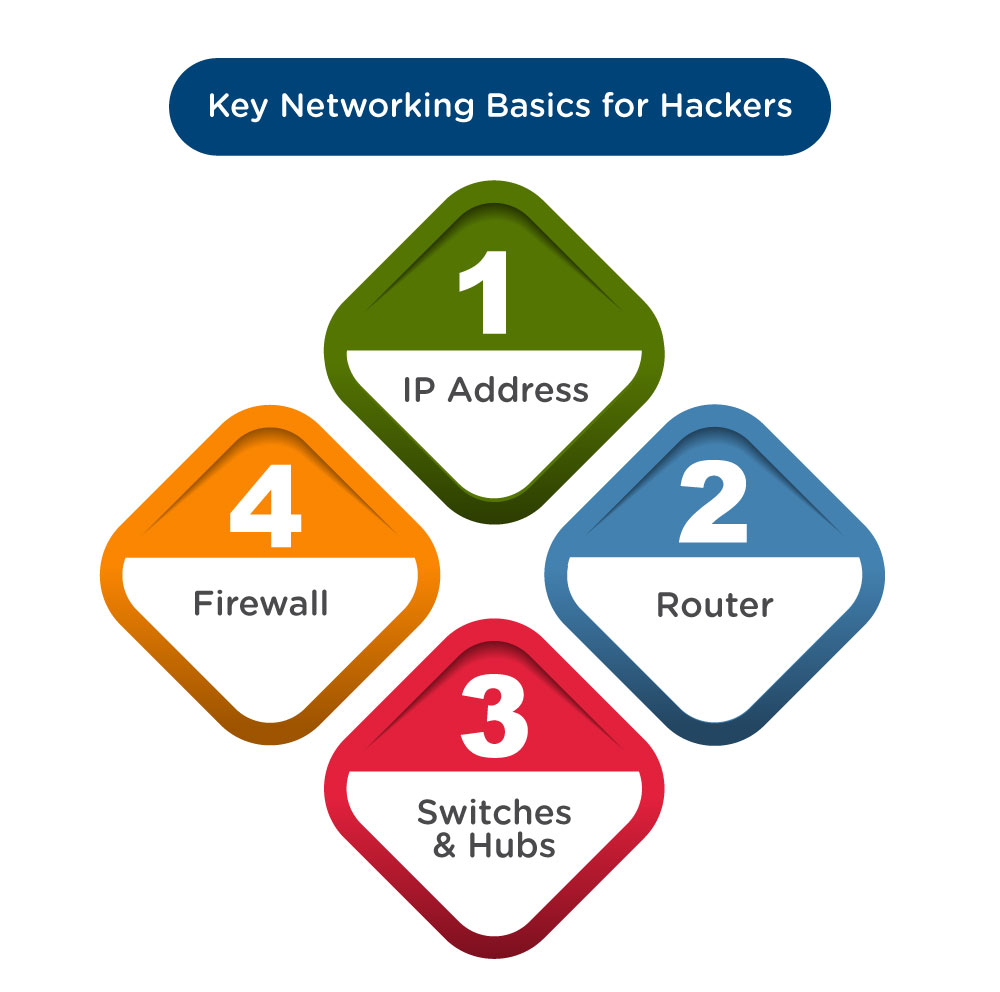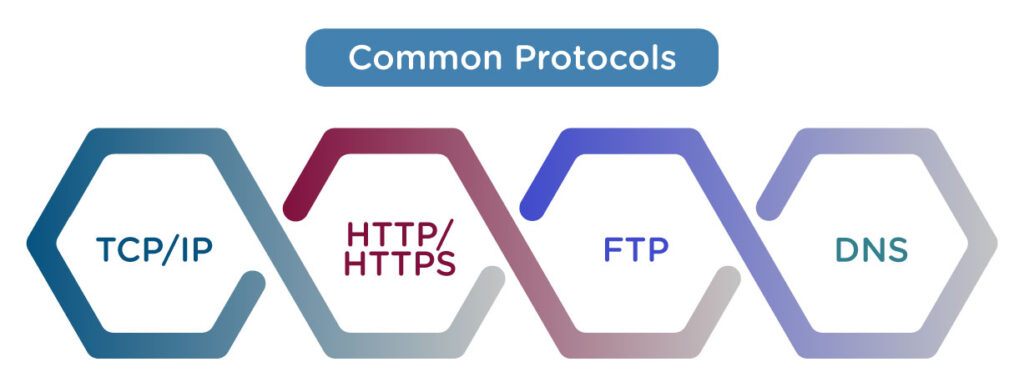The journey into cybersecurity and hacking begins with a solid understanding of networking basics for hackers. This essential knowledge lays the groundwork for recognizing how devices connect and communicate, as well as identifying potential security threats. They make our tasks easier and help us stay connected with each other. But these conveniences come with some dangers. This makes hackers and cybersecurity professionals important players. If you are interested in researching cybersecurity or hacking, then learning the basics of networking is a must. In this blog, we will help you to understand some necessary networking basics for hackers.
What is Networking?
Networking is how computers and devices talk to each other. They follow certain rules to share information, whether it is over the internet or on a local network, like the Wi-Fi in your home. For example, a report from 2024 states that 68% of organizations noticed more network security incidents. This highlights how important strong networking rules are.
For instance, take the example of a postal system. Just like how a letter or packet is sent from one place to the other, so does data reach its destination along various pathways. But in a computer network, all this is facilitated by cables, wireless signals, and routers.
Types of Networks
There are different types of networks. Below are some of the basics of each network:

- LAN (Local Area Network): This is the smallest type of network. It is used in a single building, such as your home or office. It connects all the devices such as computers, printers, and phones.
- WAN (Wide Area Network): WAN covers a much larger area. The internet is the largest WAN in the world. It connects millions of devices around the world.
- Virtual Private Network (VPN): A VPN allows users to remotely access a network from different places. It is useful for hackers and security experts because it allows them to hide their identity and data while they connect to a network.
Key Networking Basics for Hackers
As you study networking basics for hackers, you will want to know the basic components that you might find in a network. These are:

- IP Address: An IP address is like your home address for a device on a network. It is a unique number that helps devices talk to each other.
- Router: A router connects different networks, for example, your home Wi-Fi to the internet. It acts like a bridge between them. It helps data find the best way to move smoothly from one device to another.
- Switches and Hubs: Switches and hubs help multiple devices in a network communicate with each other. A switch is smarter because it knows exactly which device should get the data. A hub, on the other hand, sends the data to all connected devices.
- Firewall: A firewall protects your network and is important in understanding networking basics for hackers. It checks incoming and outgoing traffic and blocks anything that seems suspicious or harmful.
Common Protocols
A protocol is a set of rules governing how data can be sent and received over the network. Among the most critical ones to remember are:

- TCP/IP: This is the main set of rules that makes the internet work. It takes data, breaks it into smaller pieces (packets), sends them over the network, and puts them back together at the other end.
- HTTP/HTTPS: HTTPS is essentially a secure protocol. Both HTTPS and HTTP are web surfing rules. It has your information enciphered with the use of keys.
- FTP: The process used in transferring files over a network from device to device, commonly used in uploading files onto websites.
- DNS: DNS works in a way that mimics an internet phonebook, where website names change into IP addresses that computers can comprehend.
Hacking and Networking
For hackers, networking basics for hackers are important because they use this knowledge to find weaknesses in networks. Cyber attackers normally target vulnerabilities in devices, routers, or software running on a network. They may also exploit weak passwords or poor encryption to steal information.
For instance, hackers can use methods such as:
- Packet Sniffing: This involves the capture of data packets traveling through a network in search of sensitive information, such as passwords or credit card numbers.
- Man-in-the-Middle Attacks: In this type of attack, a hacker secretly listens in and changes the communication between two devices without knowing them.
- Denial-of-Service (DoS) Attacks: In this type of attack, hackers flood a network or server with too many requests, making it crash or stop working.
Cybersecurity and Networking
Cybersecurity professionals ensure the protection of the network from hackers and other kinds of online attacks. They, however, do exactly the opposite with the knowledge about networking possessed by hackers to provide defense and not offense. For instance, a report from Cybersecurity Ventures says that cybercrime will cost the world USD 9.5 trillion in 2024. If it were a country, cybercrime would be the third-largest economy after the U.S. and China.
Common cybersecurity techniques rooted in networking basics for hackers, include:
- Encryption: Encryption is the process of scrambling data so that only people with permission can read it. It is applied to keep the sensitive data secured as it crosses over the network.
- Vulnerability Testing: Cybersecurity experts do the same that hackers would about the networks to try and fix weaknesses before a hacker takes advantage of them.
- Intrusion Detection Systems (IDS): IDS monitors network traffic for unusual activities and forwards messages to the security teams regarding potential attacks.
How Does Networking Help Us Stay Secure?
Networking basics for hackers are at the core of the digital world. Hackers and cybersecurity professionals need to learn very basic knowledge about how networks work. Hackers want to gain access to networks, whereas cybersecurity professionals try to protect them. The key is to know how devices talk to each other and what tools can keep information safe.
The online world offers many chances, but it also has some dangers too. By learning about networking, you will understand how to protect yourself and others from online threats. This makes the internet a safer place for everyone.
Learn more about the newest technologies and innovations at SecureITWorld!
FAQ
Q1. How much networking is required for cybersecurity?
Answer: Networking is very important in cybersecurity. You need to understand how data moves across networks and how devices are connected so you can protect them from attacks.
Q2. Do hackers need to know about networking?
Answer: Yes, hackers need to understand networking for hackers. Knowing how networks work helps them find weaknesses and exploit them to break into systems.
Q3. Which tool is commonly used for scanning?
Answer: A common tool used for scanning networks is Nmap. It helps identify devices and services on a network, allowing security experts or hackers to spot vulnerabilities.
Q4. What are the basics of cybersecurity networking?
Answer: The basics include understanding IP addresses, firewalls, encryption, protocols, and how routers and switches work. These elements help keep networks safe from attacks.
Recommended For You:





